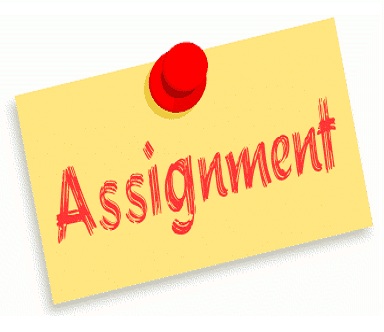What is Plagiarism?
What is Plagiarism?

Plagiarism is stealing another author's work and claiming it as your own original ideas. It is a serious offence and one that you will have to be very aware of especially in the online world. It is very tempting to just copy and paste information that you find from a website and hit 'submit', but this is considered plagiarism! The consequences for plagiarism can be a zero in the assignment, a zero in the course, or possibly something even worse.
There are many different ways to track and identify plagiarism. The simplest is just to check Google. If someone was able to find it online to begin with, chances are someone else is going to be able to search for it as well. There are also websites and programs, such as plagiarism.org or turnitin.com that will search the Internet and highlight anything in an assignment that is not original.
 When you are behind or stressed out by time constraints, it can be tempting to ask a friend to borrow their assignment and perhaps even to submit it as your own. Yikes! Bad decision. This is extremely dishonest, puts your integrity in question and can be extremely embarrassing when you get caught and end up with a mark of zero. Submit your own work that you can be proud of.
When you are behind or stressed out by time constraints, it can be tempting to ask a friend to borrow their assignment and perhaps even to submit it as your own. Yikes! Bad decision. This is extremely dishonest, puts your integrity in question and can be extremely embarrassing when you get caught and end up with a mark of zero. Submit your own work that you can be proud of.
Here are ways to avoid plagiarism:
![]()
1. Rewrite the information in your own words. This will not only help you avoid plagiarism, it is also a really effective learning tool! You can not be accused of plagiarism if you are not copying from a source. Try writing concise, point-form notes of the information you want to use, then rewriting it based off of the point form. This forces you to express what you want to say in your words.
2. Include a bibliography. If you have used ideas from a specific source, include a bibliography at the bottom of your assignment. Check out this link to find out how to write a proper bibliography. You can use amazing websites such as Son of Citation or EasyBib to help you create your bibliography. You can even get an EasyBib add-on installed right into your Google Doc so that you can form citations and works cited pages in a couple of clicks.
3. Cite it. If you ever directly quote a source, you must cite it. For proper citation technique, check out this link.
|
Rocky View Schools highlights the importance of not plagiarizing others’ work including assignments, tests, quizzes and exams. In the Responsible Use of Technology Agreement Student that every student signs at the beginning of the year it says, “6.14 Network users will not engage in plagiarism of information obtained via “rockynet” network.” Plagiarism is a serious offense; it will be brought to the attention of the Administration office at both your Home School and RVSO. Plagiarized work will result in a grade of “zero” for the assignment and may result in a grade of “zero” for the course, as well as academic suspension/expulsion. |
![]() Watch the following video on how to prevent accidental plagiarism.
Watch the following video on how to prevent accidental plagiarism.

After watching the video "Avoiding Accidental Plagiarism" answer the following question using the journal tool in moodle.
Question: What are the five tips to avoiding accidental plagiarism that are discussed in the video? Identify on each one and elaborate on what each one means.